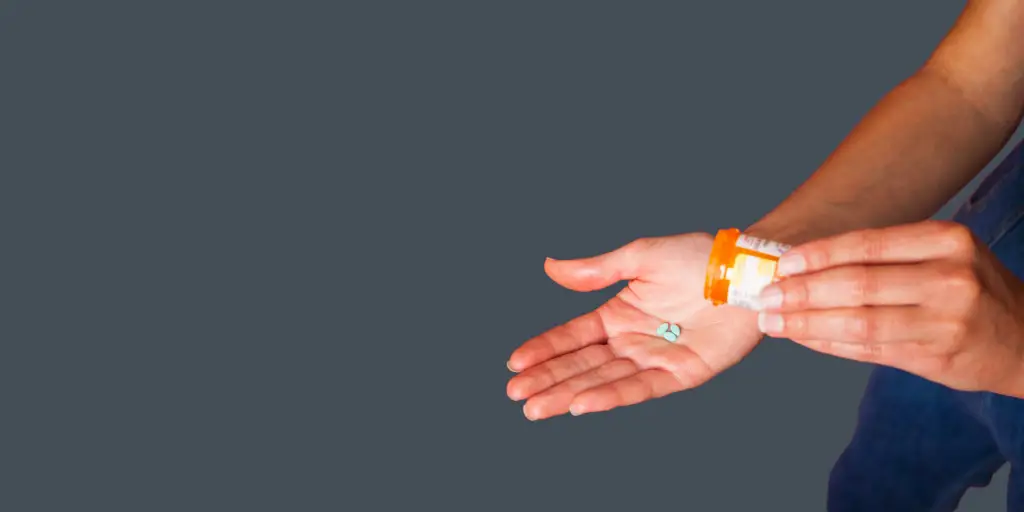By Dr. Jerrica Kirkley, MD
Co-contributors: Rachel Percelay and Alyssa Billingsley, PharmD
Most people have probably heard of the hormone estrogen. Estrogen is a hormone we all naturally make, but different bodies make different amounts. It is one of the sex steroid hormones involved in the development of the various physical changes classically associated with puberty (think hair growth, and changes in voice and body parts).
If you’re transgender, a broad term generally describing someone whose gender identity is different from their sex assigned at birth, estrogen might be a part of your gender-affirming hormone therapy. This is inclusive of gender non-conforming and non-binary folks. Estrogen-based therapy can also be an important therapy for intersex folks. Here we’ll review gender-affirming care and what it might look like for someone using estrogen-based therapies.
What is gender-affirming care?
Gender-affirming care is, at its core, exactly what it sounds like — healthcare that affirms you to live authentically in your gender. Previously, care for transgender people often followed an outdated one-size-fits-all framework of a provider dictating the same set of hormones and surgery for every trans person seeking medical care. Instead, gender-affirming care allows each person to seek only those interventions they desire to affirm their own gender identity.
As part of gender-affirming care, gender-affirming hormone therapy (GAHT) is prescribed to encourage physical changes in the body to help people live their authentic selves with respect to their gender identity or lack thereof. Research has shown that the gender-affirming care model improves health outcomes for trans people. In fact, it is considered standard of care and is supported as a medical necessity by nearly every major medical association in the United States, including the American Medical Association, the American Academy of Family Physicians, and the American Psychiatric Association.
GAHT vs. hormone replacement therapy
Since GAHT and hormone replacement therapy (HRT) are often confused or used interchangeably, let’s take a moment to differentiate them.
Hormone replacement therapy classically describes the process of prescribing hormones to cisgender people, meaning those individuals whose gender identity matches their sex assigned at birth, often to relieve symptoms of hormone imbalance. For example, estrogen may be prescribed to postmenopausal cisgender women to help with hot flashes.
The term HRT has often been used by the trans community to describe the process of gender-affirming hormone therapy. However, GAHT is a more accurate description of the use of hormones by trans folks because nothing is technically being “replaced.” The medical community who takes care of trans folks is moving away from saying “HRT,” and instead, is using “GAHT” so as not to conflate the different therapeutic practices.
Who typically uses estrogen-based GAHT?
The answer: No singular gender identity is required for estrogen-based GAHT. But generally speaking, it is commonly prescribed to trans women, and transfeminine, nonbinary, and intersex folks.
Therapies used in estrogen-based GAHT
Estrogen, testosterone blockers or androgen blockers, and progesterone are the large groups of therapies that are typically used in estrogen-based GAHT. Each group of medications can be administered in a variety of dosages and routes.
The Endocrine Society, the University of California, San Francisco, and the World Professional Association for Transgender Health have published clinical guidelines around how to use medications for GAHT. Here we’ll review the different options that are available and what to expect from each therapy.
Estrogen therapy
Estrogen is a cornerstone of estrogen-based GAHT. In estrogen-based GAHT, bioidentical estrogen (also known as 17-beta estradiol) is used. The term “bioidentical” is used to describe hormone therapies that are identical in structure to the hormones produced by our own bodies.
We’ll briefly compare the three main uptake methods of estrogen you might be prescribed — the tablet, injection, and patch — and their related dosages. Please note that all doses listed below are examples of starting ranges. Your specific dose would be adjusted based on a personalized conversation with your provider.
1) Tablet
Although estradiol tablets are made to be taken orally, it is generally recommended in GAHT to take them sublingually (dissolved under the tongue). The sublingual route is thought to be potentially safer than swallowing the tablet. Your pharmacist may be unfamiliar with the sublingual method — that’s okay! If your provider recommends this method, just let your pharmacist know that you’ve discussed it with your medical provider.
The starting dose of estradiol tablets is typically 2 to 4 mg per day. With current GoodRx discount prices, therapy can cost as little as $8 to $15 per month.
2) Injection
Most commonly, estradiol injections are given into the upper outer thigh (intramuscularly), but an injection under the skin (subcutaneously) in the lower belly or thigh area is also an option if there is enough skin or fat there. There are two common types of injectable bioidentical estrogen: estradiol valerate (brand name, Delestrogen) and estradiol cypionate (brand-name Depo-Estradiol).
Not all pharmacies keep injectable estradiol in stock, so it is best to call ahead to make sure that it is available. If you are unable to find it, you always have the option to switch to the tablet or patch.
Dosage for estradiol valerate, for example, may be 6 mg to 8 mg (0.3 mL to 0.4 mL) once weekly, and it can be adjusted based on individual goals. With a GoodRx discount, a vial of the 20 mg/mL strength will generally cost around $50 for the generic version.
An example dosage of Depo-Estradiol may be 1.5 mg to 2 mg (0.3 mL to 0.4 mL) once weekly. It is currently only available as a brand without a lower-cost generic version. With GoodRx, a vial can cost as little as $120 based on current GoodRx discount prices.
3) Patch
Estradiol is also available as a patch that you place on your skin, and it comes as once or twice weekly options. According to UCSF guidelines, the patch seems to be the safest and preferred form of estradiol in terms of blood clotting risk and for use in active smokers. It’s worth noting that for some people, it is difficult for the patch to stay on. It can also sometimes cause skin irritation.
The maximum-dose patch is a 0.1 mg per day patch, and most people use one or two at a time. Depending on the dose, a one-month supply may cost as little as $30 based on current GoodRx prices.
What to expect from estrogen therapy
Most people first start noticing changes from estrogen like chest development and nipple tenderness at around 2 to 3 months after starting (regardless of method). Mental health, especially anxiety and depression, can also improve soon after starting estrogen. Some of the other changes that occur more gradually can include:
- Body fat redistribution to the outside of the body (including the hips, thighs, and glutes)
- Softer and less oily skin
- Thinning and slowed growth of coarse body and facial hair
- Decreased libido (sex drive) and sexual function
- Decrease in size of some parts of the genitals
Most folks will max out on physical changes after taking estradiol for 2 to 5 years, but they continue taking it beyond that point to maintain the changes that have occurred and to maintain bone health.
Regarding the risks of estrogen, there has historically been a controversy over a possible increased risk of blood clots. Certain forms of estrogen like Premarin (which is made from horse urine) and ethinyl estradiol (like in birth control pills) are known to cause blood clots.
The link between bioidentical 17-beta estradiol and blood clots is not as clear. There is a possible link between estrogen and blood clots, heart attack, and stroke, but the studies which suggest this are complicated by the fact that they do not look at the specific forms of estrogen being used. Consistently, the data seems to suggest that risk goes up with higher levels of 17-beta estradiol in the blood. Overall there may be a small, increased risk of blood clots, stroke, or heart attack, so it is recommended that estrogen levels be maintained between 50 pg/mL and 200 pg/mL to minimize this risk. Your provider will monitor your levels to make sure you stay in a range that is safe for you.
One final risk of estrogen therapy is infertility. Over time, estrogen causes the levels of testosterone in the body to drop, which then causes changes to other body parts that are important in allowing pregnancy to occur. If preserving fertility (having children with your own genetic material in some way) is important to you, a reproductive specialist can help you freeze genetic material that can be used for a pregnancy later.
Testosterone blocker or androgen blocker therapy
Testosterone is a type of androgen, another sex hormone produced in all bodies in different amounts. Medications for testosterone blocker therapy are often referred to as testosterone (“T”) blockers or androgen blockers. While T-blockers are one type of therapy that can be used with estrogen in GAHT, the decision of whether or not to use them is very individualized. Some people are on none, one, or multiple T-blockers at the same time, depending on their personal situation.
T-blockers block the effects of testosterone in different ways but do not typically directly lower testosterone levels. It is important to know that estrogen (not testosterone blockers) is primarily what lowers testosterone in the body. One way that T-blockers work is by directly blocking testosterone receptors, proteins that testosterone normally interacts with to activate certain biological processes. Or, they can block the conversion of testosterone to dihydrotestosterone (DHT), a stronger form of testosterone.
The most common T-blockers used in GAHT include spironolactone, or “spiro” for short, and DHT-blockers like finasteride and dutasteride. We’ll briefly compare each of these medications below. Again, all doses listed are sample starting ranges and are adjusted based on a personalized conversation with your provider.
1) Spironolactone (“spiro”)
Spironolactone is a direct androgen receptor blocker that can be used as a supplement to estrogen. It is also a diuretic, meaning that it can make you pee more often, and it can raise your potassium levels, so you’ll need to have blood work done while you’re taking spiro to make sure your potassiums levels don’t get too high. It can also lower your blood pressure and has been reported to cause depression and brain fog.
The typical starting dose of spironolactone is one 50 mg tablet per day taken by mouth, and it can be increased as needed. Currently, the lowest price for 30 tablets of spironolactone 50 mg is about $9 with a GoodRx discount.
2) Finasteride and dutasteride
Finasteride and dutasteride block conversion of testosterone to dihydrotestosterone or DHT, the stronger form of testosterone in the body. Dutasteride may be more effective at blocking testosterone’s effects than finasteride.
Since DHT plays a big role in scalp hair loss, finasteride is also prescribed to treat hair loss outside of gender-affirming care. For those who are worried about scalp hair loss or are concerned about the side effects of spiro, finasteride can be a good option instead.
The typical starting dose of finasteride is 5 mg per day. It also comes in a 1 mg tablet for folks who prefer a lower dose. The lowest GoodRx price for 30 tablets of either the 1 mg or 5 mg strength is about $8 to $9, based on current discounts. Dutasteride is typically dosed at one 0.5 mg capsule per day. The lowest GoodRx price for 30 tablets is currently about $15.
What to expect from testosterone or androgen blocker therapy
Using T-blocker therapy to inhibit the effects of testosterone can allow estrogen to work more quickly while testosterone levels gradually drop. The effects of these therapies in conjunction with estrogen can vary significantly. Generally speaking, the changes you should expect are similar to the ones outlined above in estrogen therapy, though perhaps a bit faster.
Progesterone therapy
Progesterone is another hormone that can be used as part of estrogen-based GAHT. GAHT generally uses bioidentical progesterone, called micronized progesterone or Prometrium (the brand name).
What to expect from progesterone therapy
We unfortunately don’t have any evidence to show that progesterone causes significant changes within gender-affirming care, mostly because the studies have not been done. While the research is lacking, there are a fair amount of folks who feel that it helps with things like breast development, including rounding out the breasts and areolar development, adding fullness to the hip area, and possibly improving mood and increasing libido. It does appear to be safe based on current evidence.
Some risks and side effects of progesterone therapy include drowsiness, nausea, and occasional weight gain. There is also a risk of androgenizing effects (i.e., testosterone-like changes such as coarse or dark hair growth on the face, or acne) because some synthetic forms of progesterone are made from hormones in the same family as testosterone. Micronized progesterone is less likely than other forms of synthetic progesterone to cause these androgenizing effects.
How to learn more
If you want to learn more about estrogen-based GAHT, the best place to start is by talking to your healthcare provider. However, if you don’t have one, you can find a local gender-affirming provider near you by visiting the WPATH provider directory or checking to see if you live in a state covered by Plume.
If you’d like to get started with Plume and make an appointment to see a healthcare provider, please sign up here.
For information about coupons for any medications discussed here, please visit GoodRx.



